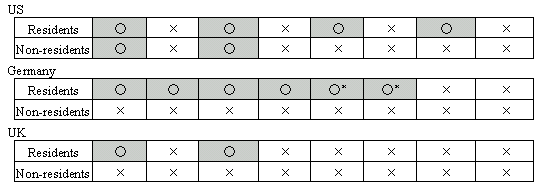Revision of the Definitions of Money Stock Components and Release of Data on Residents' Deposits Overseas
April 16, 1998
Bank of Japan
Research and Statistics Department
In line with the change in financial conditions, including the implementation of the revised Foreign Exchange and Foreign Trade Law, the Bank of Japan will revise the definitions of money stock components and also release data of residents' deposits in the overseas branches of domestically licensed banks.
1. Inclusion of data for "foreign banks in Japan," " domestically licensed foreign trust banks," and "central organizations of financial institutions for small business, agriculture, forestry, and fisheries" in money stock
From the next release of money stock data (for April), the Bank of Japan will revise definitions of money stock components.1 Data for "foreign banks in Japan" and "domestically licensed foreign trust banks" are classified into M1-M3, and broadly-defined liquidity according to type of financial asset. These assets were previously not so large, and thus the Bank of Japan excluded them from money stock. However, they have rapidly increased and their usefulness is almost equal to the assets of institutions already included in money stock. Hence, the Bank of Japan has decided to include them in money stock.
At the same time, the Bank of Japan will also include data of "central organizations of financial institutions for small business, agriculture, forestry, and fisheries" in money stock. Data classification according to type of asset held by these central organizations is effected in the same way as by each affiliated institution: data of the Zenshinren Bank are classified into M1, M2, and broadly-defined liquidity, and those of the Shinkumi Federation Bank, National Federation of Labor Credit Associations, credit federations of agricultural cooperatives, and credit federations of fishery cooperatives are classified into M3.
2. Release of data concerning residents' deposits in the overseas branches of domestically licensed banks
The Bank of Japan will release the above data (for April) on both a month-end and monthly average basis from next month,2 which will make it easier to grasp the statistical trend of residents' deposits overseas. In this context, the revised Foreign Exchange and Foreign Trade Law (which came into effect this month) abolished regulations covering such deposits and promotes access to them for Japanese residents, both individuals and corporations. It is difficult for the Bank of Japan to collect data of residents' deposits overseas at foreign banks, so it collects such data with respect to the overseas branches of domestically licensed banks.
Contrary to practice in some countries, the Bank of Japan has also decided not to include data on residents' deposits in the overseas branches of domestically licensed banks in money stock but to release them independently.3 After data accumulation, the Bank of Japan will reconsider the propriety of their exclusion from money stock, examining the statistical improvement in the relationship between money stock including such data and nominal GDP, etc.
Japan's Money Stock Broken Down into Location of Financial Assets
For reference:
- For one year from next month's release of money stock data, the Bank of Japan will present outstanding data on both the previous basis and new basis so as to avoid misunderstandings caused by discontinuity (but changes in average outstanding from a year ago will only be on the previous basis).
- To be released as "Deposits of Japanese Residents in the Overseas Branches of Private Financial Institutions " in "Economic Statistics Monthly" (from the May 1998 issue which is available in early June).
- The US includes the US-dollar deposits of residents in the foreign branches of US banks and in banks in Canada and the UK in M3. Germany includes the deposits of residents in the foreign branches and local affiliates of German companies in an extended M3 (see table).



